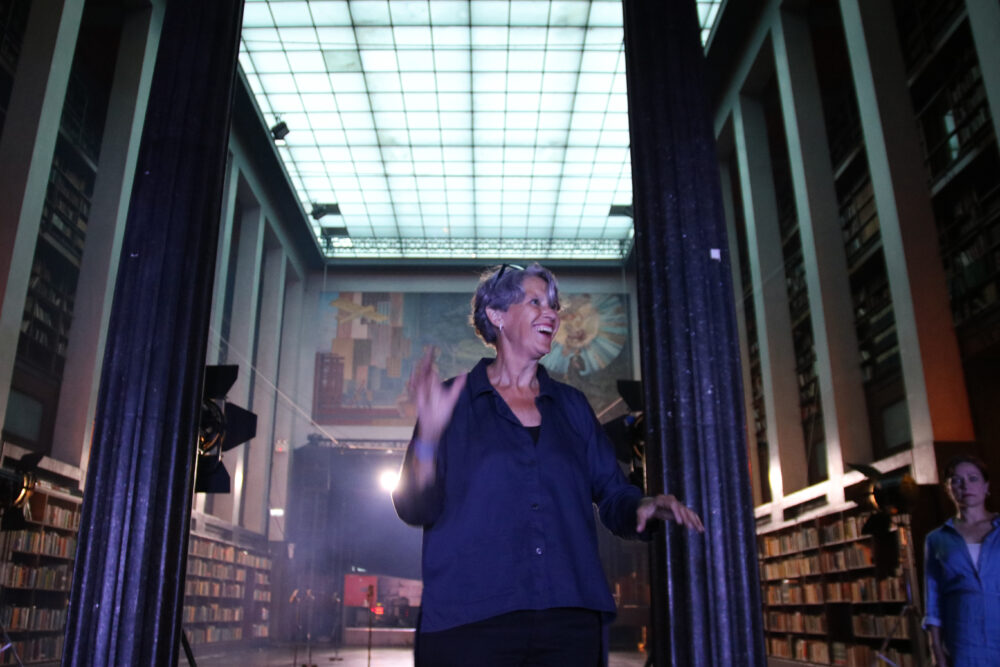A musical mini-series in four parts
Watch the episodes and interviews with the composers on YouTube
We are in the old library here in Oslo. An architectural perl from the 30s which earlier housed the main library in the city. Many of the books have been moved out, but the stories and knowledge still remains in the walls.
It’s here that the Soloists’ choir, together with conductor Grete Pedersen, recorded a series of works where the text plays a key role.
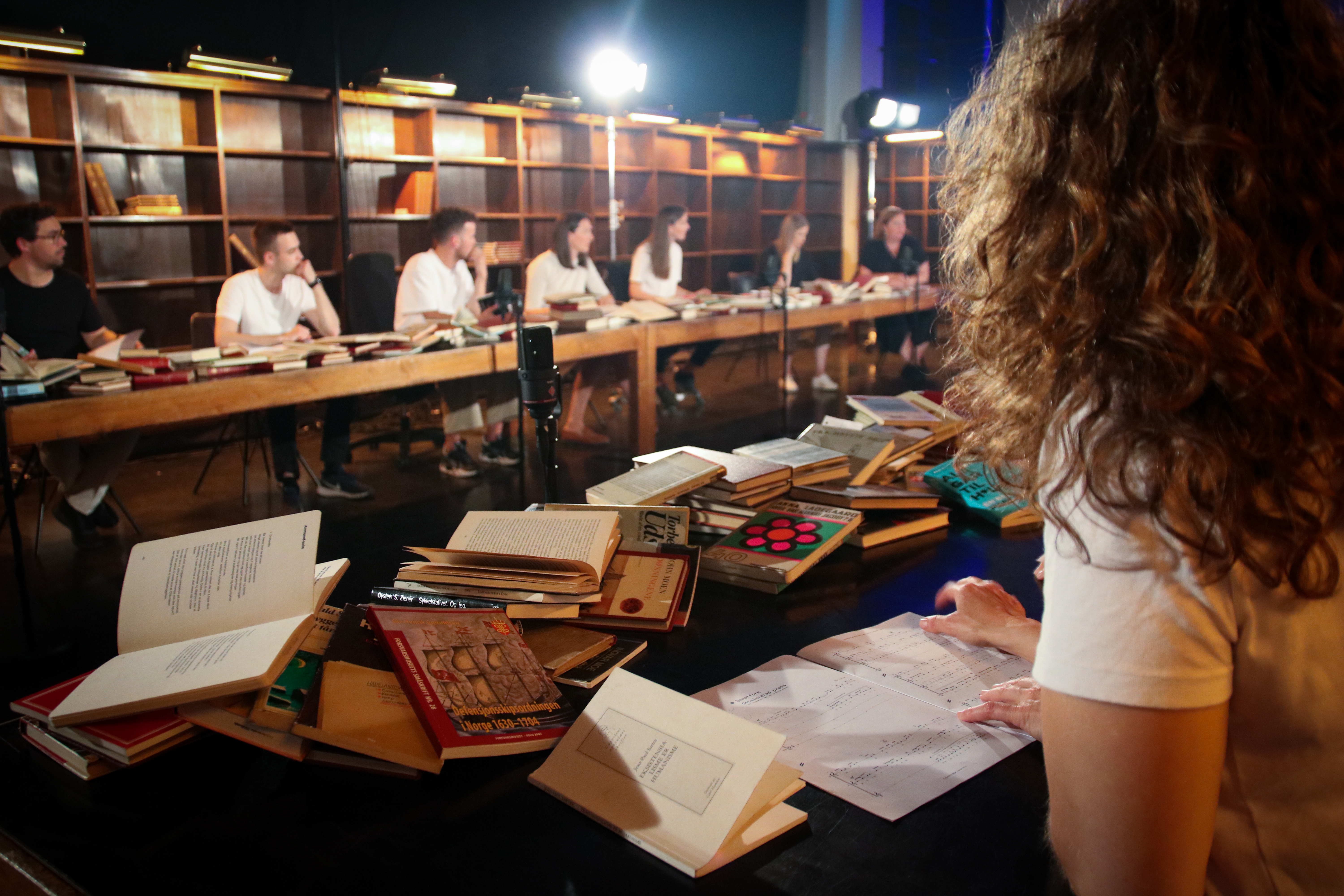
Episodes
Bo Holten: Regn og rusk og rosenbusk
Maja Linderoth: Sonatform denaturerad prosa
Eivind Buene: Schubert Singt II
Read more about each work below.
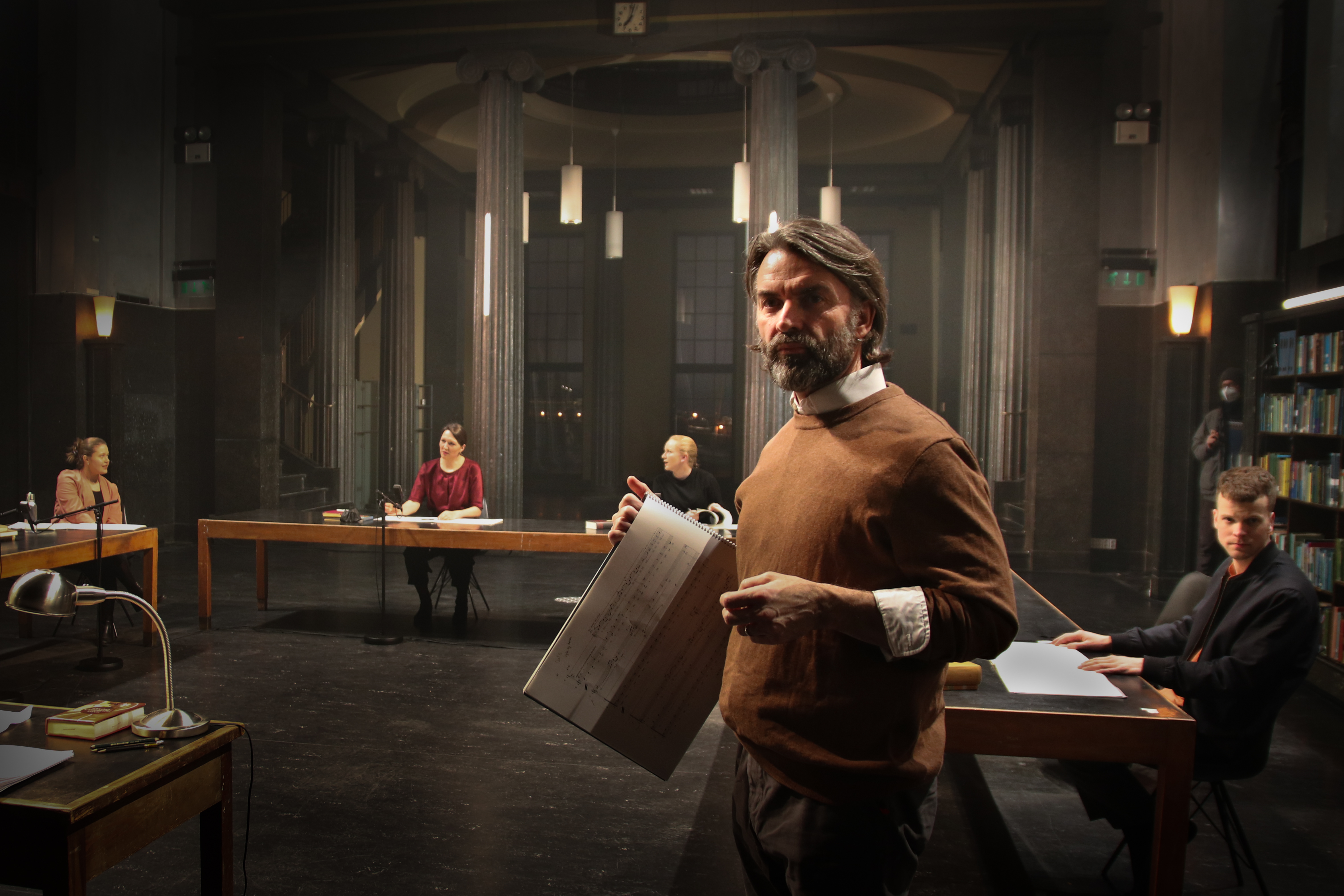
Luciano Berio: A-Ronne
Italian composer Luciano Berio's A-Ronne (1974) is written for eight singers who play out a wide range of emotions – from joking to deep seriousness. The piece expresses, in a peculiar way, the many facets of a human life and the wonderful world in which we live.
The piece takes its inspiration from a poem of the italian poet Edoardo Sanguineti. In addition Berio pulls in fragments from other texts that comment and elaborate on Sanguineti’s poem. We hear excerpts from Goethe’s Faust, the Bible, Dante’s Convivio and Divino Comedia, T.S. Eliot’s Four Quartets, an essay of Roland Barthes, and Karl Marx’s communist manifesto.
The text can, as Berio intended, be interpreted in several ways. This is also expressed in how it is musically set, often perceived as a chaos of sound and impressions.
A-Ronne was originally composed for five actors. The piece was afterwards rerwitten as a concert version for eight singers.
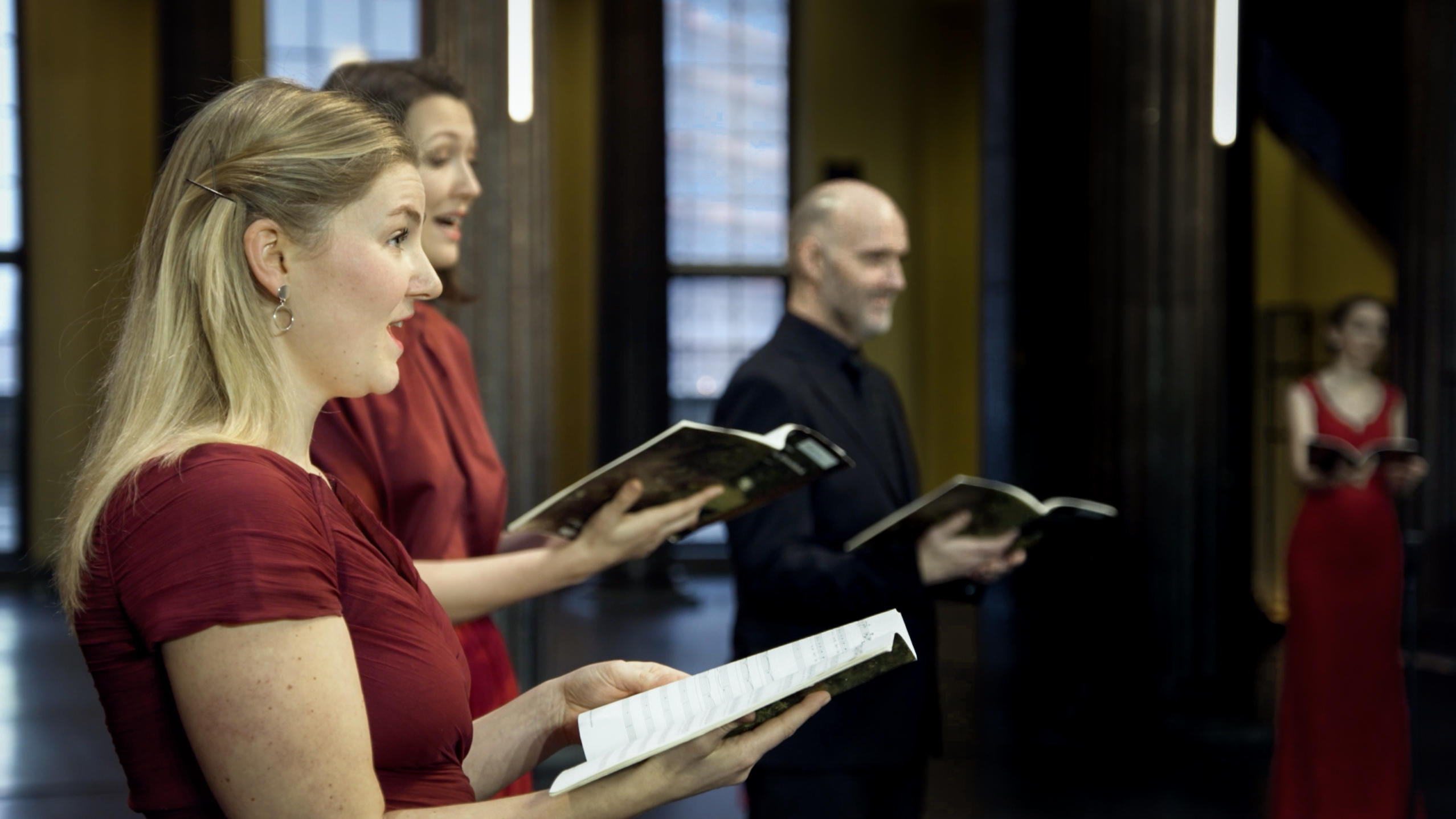
Bo Holten: Regn og rusk og rosenbusk
Watch the episode here.
Rain and Rush and Rosebush (1991) by Hans Christian Andersen is a poem extracted from his fairytale The Stone and the Wise Man from 1858. The text was suggested to Bo Holten by violin teacher Jakob Thomsen, and for four years if was on his composing desk. Finally he got the idea of basing the piece on a simple tune heard somewhere near the end of the piece.
The text symbolizes the innocence of the young blind girl in the fairytale who goes into the world to experience very conflicting moods and sentiments. But she does not fail if she follows her intuition and faith.
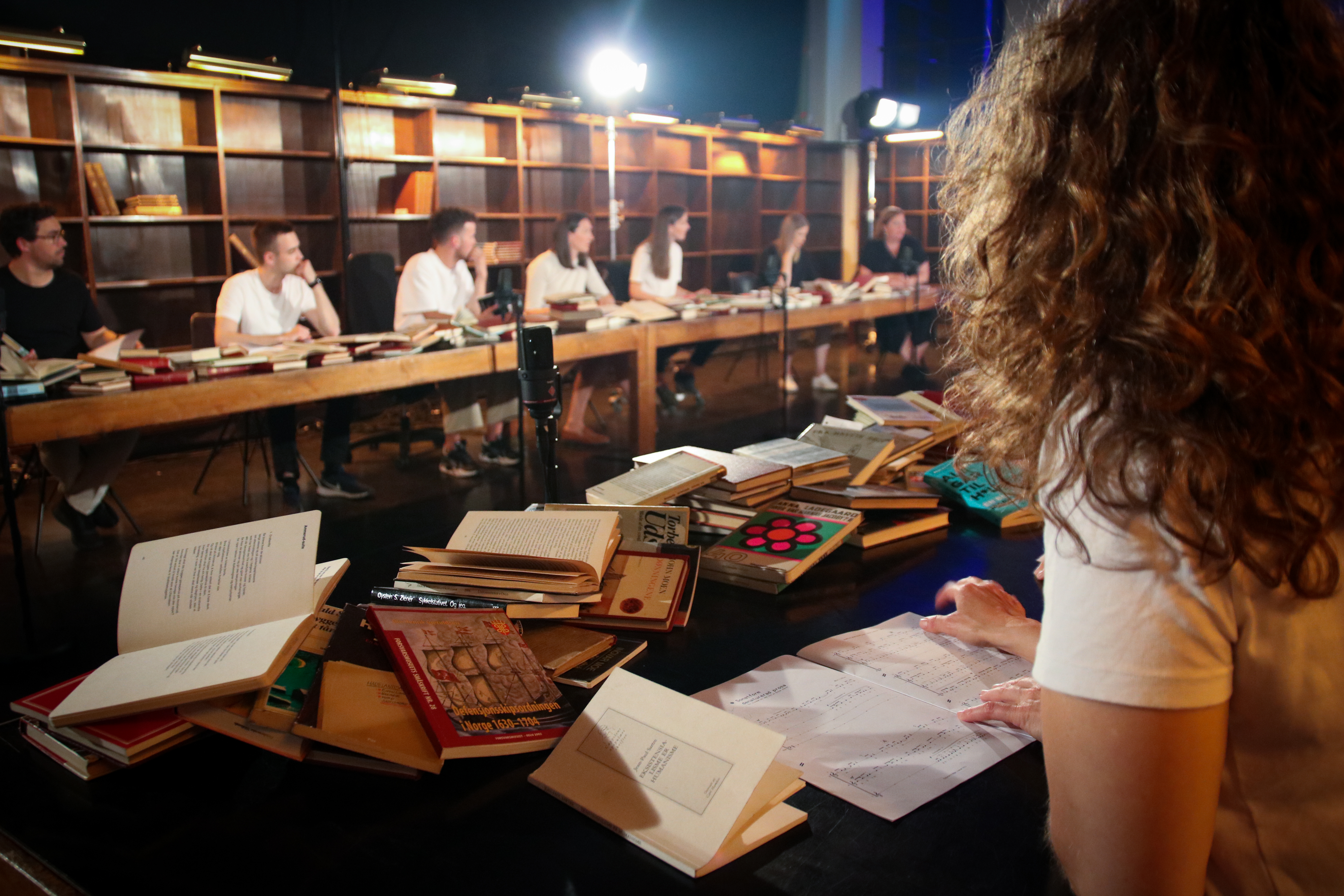
Maja Linderoth: Sonatform denaturerad prosa
Watch the episode here.
The Swedish composer Maja Linderoth was in her 1st year of studies at the Norwegian Academy of Music when she wrote the piece Sonatform denaturerad prosa. The piece was premiered in 2015 by Musikkhøgskolens kammerkor.
The genesis of Sonatform denaturerad prosa is a poem by the Swedish poet Gunnar Ekelöf which was published in 1932 in the collection sent på jorden: dikter 1927–31.
With use of his newly-created language, and influences from the then unknown surrealist movement, came a deal of uncertainty when first published. Afterwards, the collection has been acknowledged as one of the most groundbreaking works in Swedish literature history.
Sonatform denaturerad prosa is inspired by the dadaist Kurt Schwitters and is a performed musical experiment where syntax is broken down to simple, mechanical word sequences which repeat as a motive in compliance with Sonata form’s 3-part structure.
Maja Linderoth has set the text by taking in elements from musical theatre and using the choir and singers in an unconventional manner.
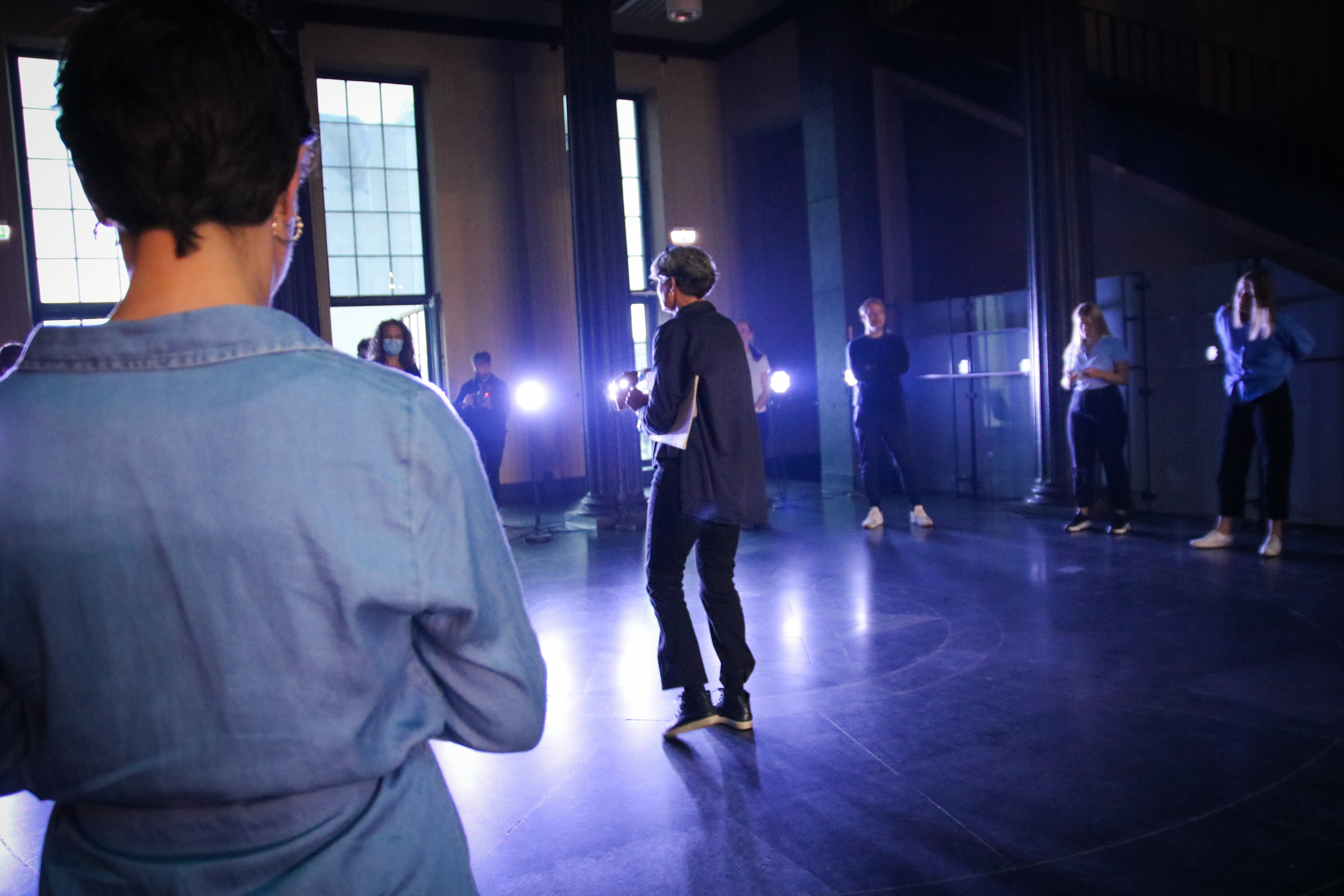
Eivind Buene: Schubert Singt II
Composer Eivind Buene about his piece Schubert Singt II:
Schubert Singt II is part of my ongoing work with the voice and Schubert's songs. I have worked with juxtaposing my own untrained voice with trained classical voices and in Schubert Singt II, I work with the choral voice.
My starting point has been an image of Schubert sitting at the piano, singing his owns songs to a group of friends. And the fact that we'll never know what Schubert's voice sounded like is the most intriguing thing with this image. There does, however, exist fragments of his diary, where he displayed a talent for the aphorism. These diary-fragments serve as text in Schubert Singt II, adding to the attempt to evoke Schubert's voice, in an imaginary, metaphorical sense.
The work is in three movements, three songs, played attacca. In the second song, we hear Schubert's choral voice, in the form of a quote from his Gesang der Geister über den Wassern. I heard this piece for the first time in a performance lead by Grete Pedersen, and when I started to work on Schubert Singt II, the Gesang insisted to find its way into the score.
However, my first meeting with Schubert's music was not in a concert hall, but listening to an LP somewhere in my teens. And the format of the vinyl record plays an important role also in this work: As the recording technology of the 20th century transformed our way of listening, the intimate listening situation was no longer the house concert of Schubert's time, but your own living room; maybe with Dietrich Fischer Dieskau on the stereo, singing Schubert's songs in private for you alone, accompanied by a pianist. In Schubert Singt II the piano plays a part in the form of a fragment taken from one of Schubert's most popular songs. This piano-fragment is transformed and pressed on vinyl-records operated by the singers on stage. In the meeting with the choral voice, it makes Schubert sing in yet another way.
